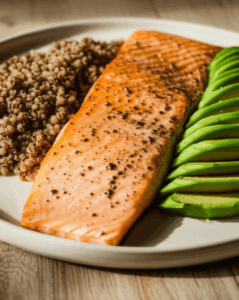In the relentless pursuit of fitness, many individuals fall prey to a common misconception: that more is always better. The belief that every waking moment should be dedicated to pushing physical limits often leads to a detrimental workout habit: neglecting essential rest and recovery. While dedication is commendable, the absence of strategic downtime can actively sabotage progress, leading to plateaus, injury, and burnout. As an Exercise Physiologist, it’s crucial to understand that true fitness gains aren’t made solely during intense workouts, but significantly in the hours and days between them.

The Science of Muscle Growth and Repair
To comprehend why rest is paramount, one must first grasp the physiological response to exercise. When you engage in physical activity, particularly strength training or high-intensity intervals, your muscle fibers undergo microscopic tears. This process, known as muscle damage, is a natural and necessary stimulus for growth. However, the actual process of muscle building, or hypertrophy, doesn’t occur during the workout itself; it happens during the subsequent recovery period.
During rest, the body initiates a sophisticated repair and rebuilding process. It synthesizes new proteins, laying down stronger and thicker muscle fibers to adapt to the stress it has endured. Key hormones like growth hormone (GH), often referred to as the “youth hormone,” are released in higher amounts during deep sleep stages, actively promoting tissue repair and regeneration. Conversely, the stress hormone cortisol, when chronically elevated due to insufficient rest, can inhibit muscle growth and repair, making it harder to build muscle mass. Adequate sleep is also vital for replenishing glycogen stores, the primary energy source for muscles, ensuring optimal performance in future workouts.

The Dangers of Overtraining
Ignoring the body’s need for recovery can lead to a serious condition known as overtraining syndrome (OTS). OTS occurs when the volume or intensity of exercise exceeds the body’s capacity to recover, resulting in a decline in performance and a range of adverse physical and mental symptoms.
The symptoms of overtraining can manifest in various ways:
Physical Symptoms
- Persistent Muscle Soreness and Stiffness: Beyond typical post-workout soreness, overtraining leads to unusual and prolonged muscle pain that persists with continued training.
- Decreased Performance: Despite consistent effort, you may experience a plateau or a noticeable decline in strength, endurance, speed, or overall athletic performance. Workouts may feel significantly more challenging than usual.
- Increased Risk of Injury: Fatigued muscles, tendons, and ligaments are less able to handle the stress of exercise, significantly increasing the likelihood of strains, sprains, stress fractures, and overuse injuries.
- Frequent Illness: Overtraining can suppress the immune system, making you more susceptible to minor illnesses like colds or respiratory infections.
- Altered Heart Rate: This can include a higher resting heart rate or a heart rate that takes longer to return to normal after exercise.
- Fatigue and Poor Sleep Quality: Despite feeling exhausted, individuals experiencing OTS often report poor sleep or waking up still feeling tired.
- Weight Fluctuations: Unexpected weight loss or gain can occur.
- Hormonal Imbalances: Elevated cortisol levels can interfere with muscle mass growth, promote fat gain, and weaken the immune system.
Mental and Emotional Symptoms
- Irritability and Mood Changes: Overtraining can affect stress hormone levels, leading to increased tension, anxiety, depression, moodiness, and a general lack of enthusiasm.
- Decreased Motivation: A loss of interest in training or a reduced desire to be active.
- Inability to Relax: Feeling restless or agitated even when attempting to rest.
- Poor Concentration: Mental fog and difficulty focusing on tasks.
These symptoms are clear indicators that the body is struggling to adapt and needs a break. Pushing through these signs not only hinders progress but can lead to long-term health issues and a complete breakdown of your fitness routine.

Why Rest Days Are Non-Negotiable
Far from being a sign of weakness or laziness, rest days are a fundamental component of any effective fitness regimen. They are periods where your body not only recovers but actively adapts and strengthens.
Muscle Recovery & Growth
As mentioned, muscle repair and growth happen during rest. Microtears created during workouts are rebuilt stronger and more resilient. Without adequate rest, this essential process is short-circuited, leading to stagnation or even regression in strength and muscle mass. For intense strength training, muscles typically require 48 to 72 hours for adequate repair and growth before training the same muscle group again.
Injury Prevention
Consistent, high-intensity training without breaks exhausts the musculoskeletal system. Rest days allow fatigued muscles, connective tissues, and joints to recover, significantly reducing the risk of strains, sprains, and chronic overuse injuries that can sideline you for extended periods.
Nervous System Recovery
Beyond muscle fatigue, intense training also taxes the central nervous system (CNS). CNS fatigue can lead to decreased force production, slower reaction times, and reduced coordination. Rest days provide the crucial time needed for the CNS to recover, ensuring optimal neurological function for subsequent workouts.
Hormonal Balance
Rest days help regulate hormone levels. They allow elevated stress hormones like cortisol to decrease and promote the secretion of anabolic hormones necessary for recovery and growth.
Mental Well-being & Motivation
Relentless training can lead to mental burnout, reduced motivation, and an overall negative perception of exercise. Rest days offer a psychological break, reducing stress and allowing you to return to your workouts refreshed, focused, and re-energized.
Glycogen Replenishment
Intense workouts deplete muscle glycogen stores. During rest, particularly quality sleep, the body efficiently replenishes these energy reserves, ensuring muscles are well-fueled for future performance.

Understanding Different Types of Recovery
Recovery isn’t a one-size-fits-all concept. It can broadly be categorized into two main types:
Passive Recovery
This involves complete rest with minimal or no physical activity. Examples include sleeping, relaxing, or engaging in sedentary activities. Quality sleep is arguably the most critical aspect of passive recovery, as it facilitates significant physiological repair and hormonal regulation.
Active Recovery
This involves engaging in low-intensity exercises following strenuous workouts. Unlike passive rest, active recovery keeps muscles engaged while still aiding the recovery process.
Benefits of active recovery include:
- Increased Blood Flow: Light movement boosts circulation, delivering oxygen and nutrients to muscles and tissues, which helps remove metabolic waste products like lactic acid.
- Reduced Muscle Soreness and Stiffness: By facilitating waste removal and increasing blood flow, active recovery can alleviate post-workout discomfort.
- Improved Flexibility: Gentle movement, such as stretching or yoga, can help maintain or improve joint mobility and muscle flexibility.
- Mental Break: It offers a refreshing break from intense training while still maintaining consistency in your routine.
Examples of active recovery include leisurely walking, light cycling, swimming, yoga, or gentle stretching.

How to Strategically Incorporate Rest
Integrating effective recovery into your fitness regimen requires intentional planning and a willingness to listen to your body.
How Many Rest Days?
There’s no universal answer, as recovery needs vary based on workout intensity, individual fitness levels, and goals. However, a general guideline is to schedule 1 to 3 rest days per week. For intense strength training, allowing 48 to 72 hours for a muscle group to recover before working it again is often recommended. For lighter workouts or smaller muscle groups, 24 hours might suffice, but longer recovery is often needed for high-impact or very intense sessions. Many structured programs incorporate rest days, with lifters often training hard 3-4 times per week, taking a day off between workouts.
Listen to Your Body
This is perhaps the most crucial advice. Pay attention to signs of fatigue, persistent soreness, mood changes, or decreased performance. These are your body’s signals that it needs rest.
Prioritize Quality Sleep
Aim for 7 to 9 hours of uninterrupted sleep per night. Creating a consistent sleep schedule and a sleep-friendly environment can significantly enhance recovery.
Optimize Nutrition for Recovery
Proper nutrition is fundamental. Ensure adequate protein intake (1.6–2.2g per kg of body weight) for muscle repair and growth, and sufficient carbohydrates to replenish glycogen stores. Hydration is also critical for performance and recovery.
Differentiate Between Soreness and Pain
Muscle soreness (DOMS) is normal after a challenging workout, but sharp, persistent pain, or pain that worsens with movement, could indicate an injury requiring complete rest or professional medical attention.
Embrace Active Recovery
On designated rest days, instead of complete inactivity, consider incorporating active recovery. This can help with blood flow, alleviate soreness, and keep your body moving without adding undue stress.
Conclusion
The pursuit of fitness is a marathon, not a sprint. The common workout habit of neglecting rest days is a significant impediment to long-term progress, muscle growth, and overall well-being. By understanding the critical role of recovery – both passive and active – and strategically integrating it into your routine, you transform rest from a perceived setback into a powerful performance enhancer. Prioritizing recovery is not a sign of weakness; it is an intelligent and indispensable strategy for consistent gains, injury prevention, and sustained motivation on your fitness journey.







